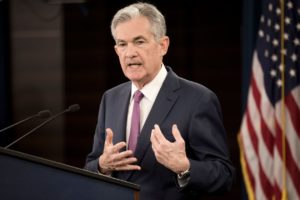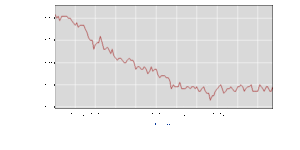The U.S. has clearly overcome the financial crisis, even as many other countries continue to struggle, but the impact on investments is sometimes perverse. As the Fed lowered interest rates, stocks became more attractive and the market boomed. But good economic news caused a drop in stock prices, while bad economic news caused stock prices to rise, as it signaled that the Fed would have no reason to continue lowering interest rates.
So today, with the economy growing more rapidly than it has since before the financial crisis, too much good news for the economy is turning into bad news for the stock market. The U.S. Bureau of Labor Statistics estimated that the economy grew at an annualized rate of 3.5% in the third quarter.
Of course, the greater the growth, the happier we are – except that the Fed worries about too much growth. If the economy “overheats,” inflation will rise, which will weaken consumer spending power and eventually reduce economic growth.
When it comes to economic growth, though, the Fed’s forecasts have been embarrassingly inaccurate. The Fed routinely inflated its economic forecasts throughout the Obama Administration and has routinely underestimated economic growth throughout the Trump Administration.
Now that the Fed is worried about overheating, the economy may actually be cooling off. While unemployment has continued to drop, business investment is down and corporate profits are growing at a slower rate.
Defining Full Employment
The lower the unemployment rate, the happier we are, too, except that the official numbers, which don’t count people who have stopped looking for work, but do count part-timers, creates a more optimistic impression than is warranted.
Today’s unemployment numbers are outstanding, but there are still millions of Americans capable of working who are not. Rather than contributing to our economic growth, they are a drag on economic growth.
Wouldn’t “full employment” mean that every American who is old enough and capable of working has a job? But full employment isn’t a 100% employment/0% unemployment rate.
“For the past few years, policy makers have repeatedly thought the U.S. was at full employment, only to be surprised as Americans continued to enter the labor force in large numbers,” according to The Wall Street Journal. “In 2015 the FOMC (Federal Open Market Committee) estimated unemployment could not go below 5.1% without triggering inflation. Its current estimate is 4.5%; the actual unemployment rate is down to 3.7%, and wage growth and inflation are still muted.”
The U.S. added 250,000 jobs in October, bringing the official unemployment rate down to 3.7%, while extending the record streak of job growth to 97 months, the Labor Department reported.
Maybe inflation hasn’t kicked in, because the unemployment rate is an inaccurate measure of employment. The Labor Force Participation Rate was 62.9% in October, which is well below the 67.3% peak it reached in 2000. By that measure, there are still plenty of people available to fill job openings.


